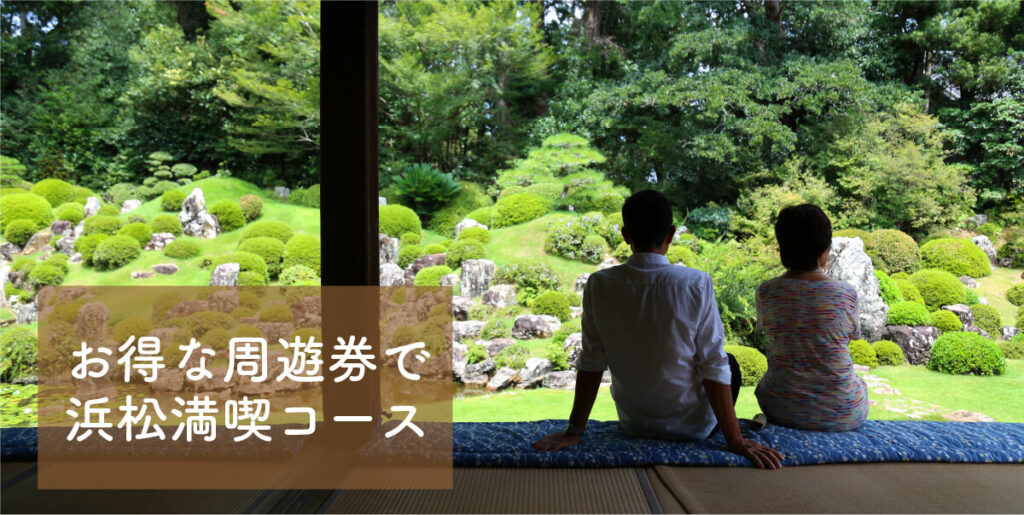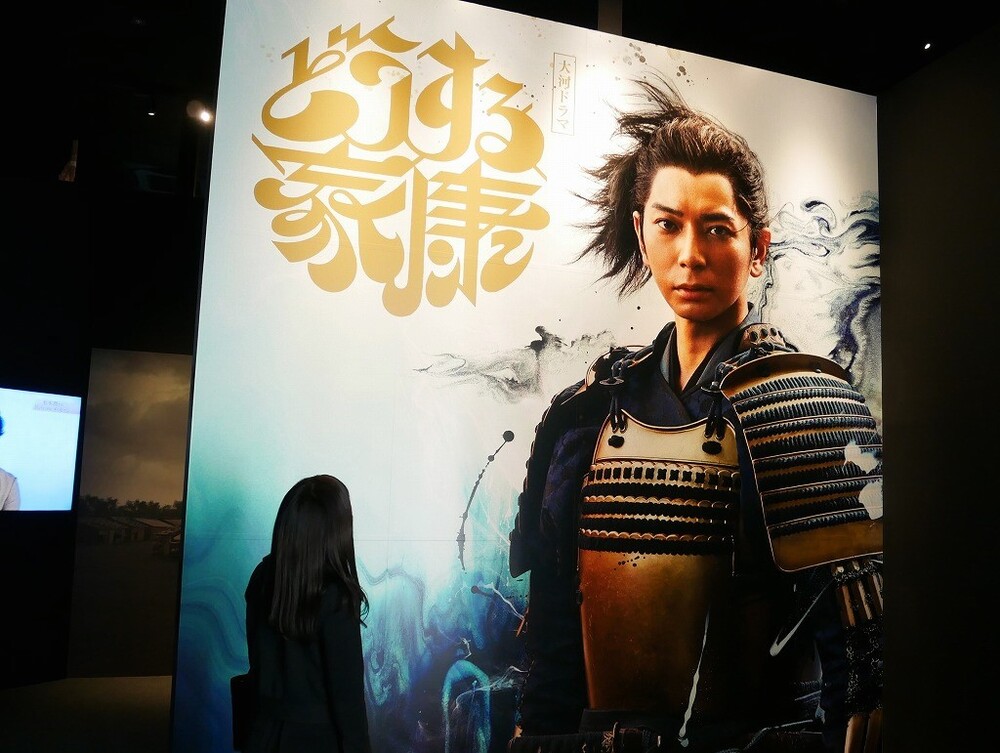Get to Know Hamamatsu

- Enjoy
- Watch
[Enjoy the historical romance of Kosai! ]Learn about kimono culture and Sakichi Toyoda tour with Nanaho
The days are getting hotter and hotter, and it feels like summer is coming!
The other day, Arai-cho, Kosai City held its first festival called “Sumiyossama”.
It seems that since ancient times there has been a custom of wearing kimono on this festival day.
Kimono is a symbol of Japanese culture.
Although it is no longer worn on a daily basis, it is still preserved as part of Japanese culture.
There are people who are spreading the Japanese culture and the kimono culture within it in Kosai City.
That person is Yumiho Osakabe (hereinafter referred to as Ms. Osakabe) from the kimono shop “Nanahou” in front of Washizu Station.
This time, I would like to introduce the kimono culture that I learned from Ms. Osakabe and the associated culture of the textile industry in Kosai City.
About Nanahou
“Nanaho” carries out activities through kimono culture with the theme of “Let each person shine and be happy together.”
Main activities
・Kimono dressing class where you can enjoy the hassle
・Kimono City Kosai Tour [Activities covered this time]
・”Care” that will please your kimono
・The cornerstone of Japanese industry, “Fusion of industry and traditional culture” by Sakichi Imakoko
・Advice to know! Weekly Kosai Tell me, Mayor Kageyama interviewer

What is the kimono and textile culture of Kosai City taught by Nanaho Ms. Osakabe?
Currently, kimonos have a strong image of being worn by tourists at tourist destinations with traditional townscapes such as Asakusa and Kyoto, and the number of young people in particular wearing kimonos at tourist destinations and taking Instagram-worthy photos has increased rapidly over the past few years. I’m doing it.
However, the kimono is not something that can be worn on a daily basis; it has a luxurious feel and is somewhat difficult to get into.
・
・
・
While there are many images like this, what do you think about “Nanaho”?
At Nanahou, we don’t focus on the visual appearance of the kimono, but instead focus on the process of making the kimono, the significance of wearing a kimono in this region, the history of the kimono itself, and how it was used in each family. , etc., we convey to visitors the goodness of the kimono and the idea of “valuing the kimono,” and introduce the kimono as a more familiar presence.
So, what is the background behind the “kimono production process” in Kosai City and the “significance of wearing a kimono in this area?”
In fact, Kosai City is where a certain person invented Japan’s first wooden power loom.
His invention subsequently led to numerous inventions and created major innovations in Japan’s textile industry.
In Nanahou’s Kimono City Kosai Tour, which I will introduce later, by wearing kimonos woven by the machine he invented, you will be able to understand the precision of the production and the efforts of the craftsmen, and deeply appreciate the value of kimonos. can be recognized.
This also adds an element of “fun” to the kimono, which is often thought to require a lot of effort, which is Ms. Osakabe’s philosophy.
About Sakichi Toyoda, founder of Toyota Automatic Loom Works
So, who is “someone”?
That person is Sakichi Toyoda, who developed Japan’s textile industry from Kosai City.

Sakichi Toyoda founded Toyoda Automatic Loom Works (currently Toyota Industries Corporation) and made innovative inventions in loom automation technology. This invention greatly contributed to the development of Japan’s textile industry.
Although Sakichi Toyoda was not the direct founder of Toyota Motor Corporation, his inventions and business foundations were passed on to his son, Kiichiro Toyoda, and had a significant impact on the founding and development of Toyota Motor Corporation.
*Currently, Mr. Akio Toyoda, the grandson of Mr. Kiichiro Toyoda, serves as the representative director and chairman of the company.
About Sakichi Toyoda's invention
Sakichi Toyoda’s most famous invention is the Toyoda-style wooden hand-powered loom, which he patented in 1896.
This loom was more productive than traditional handlooms and was adopted by many textile factories.
After that, Sakichi made further improvements and succeeded in developing an automatic loom.
In 1924, he invented the revolutionary G-type automatic loom, which revolutionized the textile industry.

About G type automatic loom
The “G-type automatic loom (non-stop shuttle change type Toyota Automatic Loom)” is an innovative loom invented in 1924 that automatically stops operation when the thread breaks or a malfunction occurs. It is equipped with an “automatic stop function”.
This feature has significantly increased production efficiency and reduced the occurrence of defective products. Furthermore, the G-type automatic loom has high productivity and reliability, and has been widely adopted by many textile factories.
Sakichi Toyoda’s invention greatly contributed to Japan’s industrial development and became the foundation of today’s Toyota Motor Corporation.
By the way, the “G-type automatic loom” celebrated its 100th anniversary this year!
To honor Sakichi Toyoda’s achievements, the Sakichi Toyoda Memorial Museum was established in Kosai City, where his life and inventions are exhibited.
[Special event] “Kimono City Kosai Tour” with Nanahou-san

I briefly introduced Sakichi Toyoda, but the origin of the clothes we wear today lies in the textile culture created by Sakichi Toyoda. When I think about this, I find it very interesting.
From here on, I would like to introduce the “Kimono City Kosai Tour,” a tour around the Sakichi Toyoda Memorial Museum that was “specially held” by “Nanaho” based on the activities of Sakichi Toyoda that I have described. Since I actually participated, I would like to tell you about the specific tour contents in detail!
First, an introduction to Nanahou’s activities and kimono culture.

First, we will listen to an explanation of Nanahou’s activities and thoughts, her connection with Sakichi Toyoda, her culture, and the kimono she will be wearing.

A special kimono left behind by Sakichi Toyoda
After receiving the explanation, we were asked to put on the kimono.
The actual kimono I wore was made from cotton fabric woven using a Y-type automatic loom invented by Sakichi Toyoda. This fabric is finished by artisans through approximately 30 steps.

Sakichi Toyoda’s hometown sake “Sakichi no Sato”
In the rice field in front of the Toyoda Sakichi Memorial Museum, high-quality sake rice “Yamada Nishiki” is grown. Furthermore, Hamanomai Sake Brewery Co., Ltd. is producing “Sakichi no Sato” (Yamada Nishiki), which is made from this sake rice grown in Sakichi Toyoda’s hometown.

Manufacturing with thought
From here, move on to the Toyoda Sakichi Memorial Museum.
At the Sakichi Toyoda Memorial Museum, Ms. Osakabe will carefully explain the many works invented by Sakichi Toyoda, his thoughts, and the influence he had on Japan and the world.
The loom they developed was revolutionary in that it automatically stopped when the thread broke, and automatically replaced the thread with a new one when the shuttle thread ran out, even though there were no electronic control panels.
This groundbreaking invention was born out of Sakichi Toyoda’s desire to “make my mother and the people around me as comfortable as possible.” I was deeply impressed to learn that the driving force behind historical inventions lies in compassion for people.

Where “Toyota of the World” was born
Next we visited the place where “Toyota of the World” was born. This small house was the birthplace of a huge company!
I was surprised to hear that Sakichi Toyoda’s son Kiichiro Toyoda was also born in this house.
Inside, manual looms and everyday tools are on display.
*The birthplace of Sakichi Toyoda was restored in 1990.
The front of Sakichi Toyoda’s birthplace is also a photo spot.
Experience Toyota-style wooden hand-powered loom
Inside the Toyoda Sakichi Memorial Museum rest area, you can try your hand at making a Toyota-style wooden hand-powered loom.

Once you get the hang of it, it’s easy to do◎
The invention of the Toyota-style wooden hand-powered loom is said to have simplified complex processes and greatly improved work efficiency.
Take a break with matcha and Japanese sweets

After completing the experience at the Toyoda Sakichi Memorial Museum, we purchased some Japanese sweets at Manjuya, a long-established Japanese sweets shop in Arai-cho, Kosai City.
After that, I returned to Nanahou, had some matcha tea and Japanese sweets, and went for a drink.

At the end, we took a photo in front of “Nanahou” and the tour ended ◎
Walking around town wearing a kimono that I don’t normally wear gave me a sense of freshness, and it was also a valuable experience to learn about the process, technological advances, and history of how the kimono I was wearing was made.
About Nanaho
Address : 5001 Washizu, Kosai City, Shizuoka Prefecture 431-0431
Phone number : 080-6920-8597
Business hours : 10:00-18:00
Holidays : Mondays and 3rd Tuesdays of the month
Yukata sales



They are also selling yukatas for the summer festival, so why not stop by?
Introduction to Odoro Festival

At the end of this month (June 29th), an event centering on Bon Odori will be held at Sunflower Square in front of JR Washizu Station◎
Why not take a trip to Kosai City?
About “Odoro Fes 2024”
Date and time : June 29th (Sat) 14:00-20:00
Location : Sunflower Square in front of JR Washizu Station
[ Event has ended. ]
How was it?
This experiential tour gave me the surprise that Kosai City is the birthplace of Japan’s textile industry, and I was able to get closer to the kimono, which is a symbol of Japanese culture!
Why not try the “Kimono City Kosai Tour” with Nanaho-san?









